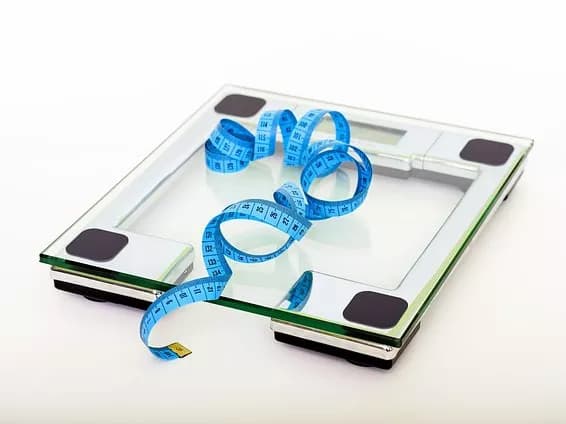
Waist-To-Height Ratio More Accurate Than BMI In Identifying Obesity, New Study Shows
Calculating a person's waist-to-height ratio is the most accurate and efficient way of identifying whether or not they are at risk of obesity in clinical practice, a new study by Leeds Beckett University shows.
The research, published in the latest edition of PLOS ONE journal, aimed to improve the way that obesity is currently measured and classified by examining the whole-body fat percentage and visceral adipose tissue (VAT) mass (the fat stored around the abdominal region where most of internal organs lie) of a group of 81 adults (40 women and 41 men). It aimed to find the most accurate way of predicting this measurement in a clinical environment and set cut-points for obesity.
The researchers, led by Dr Michelle Swainson, Senior Lecturer in Exercise Physiology in the Carnegie School of Sport at Leeds Beckett, found that 36.5% more adults would be classified as obese using whole-body fat data (one in two participants) rather than body mass index (BMI) (around one in seven participants, or 13.5%).
The team gathered accurate whole-body and abdominal fat data using a total body dual energy X-ray absorptiometry (DXA) scanner -- a highly accurate way of measuring body composition and fat content. They then calculated five predictors of whole-body fat and VAT, which could be easily replicated in a GP's office, fitness centre or at home, comparing the results to those of the DXA scan and determining which simple predictor of obesity is the most accurate.
The five predictors tested were: BMI, waist circumference (WC), waist-to-hip ratio (WHR), waist-to-height ratio (WHtR) and waist-to-height ratio0.5 (WHtR0.5).
Dr Swainson explained: "The conventional measurement of obesity used by GPs is BMI. Although there are benefits to this method, there is concern that a lot of people are being classified as obese by BMI when they are not or are being missed by this classification when they need to be referred for help. This is most definitely the case when people have a 'normal' BMI but high abdominal fat that is often dismissed. Whole-body fat percentage, and specifically VAT mass, are associated with health conditions including insulin resistance, type 2 diabetes and cardiovascular disease, but are not fully accounted for through BMI evaluation.
"Carrying fat around the abdominal area has been shown to be an independent predictor of all-cause mortality in men and women. Put simply, it is more important, especially for cardio-metabolic conditions, that your belt notch goes down than the reading on the scales."
The results showed that the best predictor of both whole-body fat percentage and VAT in both men and women was waist-to-height ratio (WHtR). The simple waist circumference divided by height measurement is not a new method of obesity classification but despite evidence supporting its use, it is still not routinely measured in clinical settings. Cut-points for predicting whole body obesity were 0.53 in men and 0.54 in women. The cut-point for predicting abdominal obesity was 0.59 in both sexes.
BMI had weak support as a predictor for whole-body fat percentage in both men and women but was a plausible alternative for the prediction of VAT mass in women.
The waist-to-hip ratio (WHR), a measure regularly recommended by fitness instructors and used in clinical practice but which, was found to be a very poor predictor of obesity according to both measures.
Dr Swainson said: "Our WHtR cut-points align broadly to current guidelines that adults and children should keep their waist circumference to less than half their height. In current clinical practice, it is common to calculate BMI for an indication of whole-body fat and waist circumference for abdominal obesity.
"Our research has shown that WHtR is a more accurate alternative to these two measures and also a more time-efficient measure. By introducing this alternative, and more accurate, measure into clinical settings, more men and women would potentially be referred to programmes, such as weight management, to receive help in improving their health. We have also shown how these simple measurements may be used as surrogates by GPs and other health care professionals when DXA scans are unavailable or inaccessible.
"Even in a small sample of adults, our results provide further evidence that alternative measures are fundamental to the more accurate identification of obesity, therefore ensuring that individuals are referred to the most suitable therapeutic approach to reduce risk of obesity-related conditions."
Materials provided by Leeds Beckett University. Note: Content may be edited for style and length.
Disclaimer: DoveMed is not responsible for the accuracy of the adapted version of news releases posted to DoveMed by contributing universities and institutions.
Primary Resource:
Swainson, M. G., Batterham, A. M., Tsakirides, C., Rutherford, Z. H., & Hind, K. (2017). Prediction of whole-body fat percentage and visceral adipose tissue mass from five anthropometric variables. PloS one, 12(5), e0177175. DOI: 10.1371/journal.pone.0177175
Related Articles
Test Your Knowledge
Asked by users
Related Centers
Related Specialties
Related Physicians
Related Procedures
Related Resources
Join DoveHubs
and connect with fellow professionals

0 Comments
Please log in to post a comment.